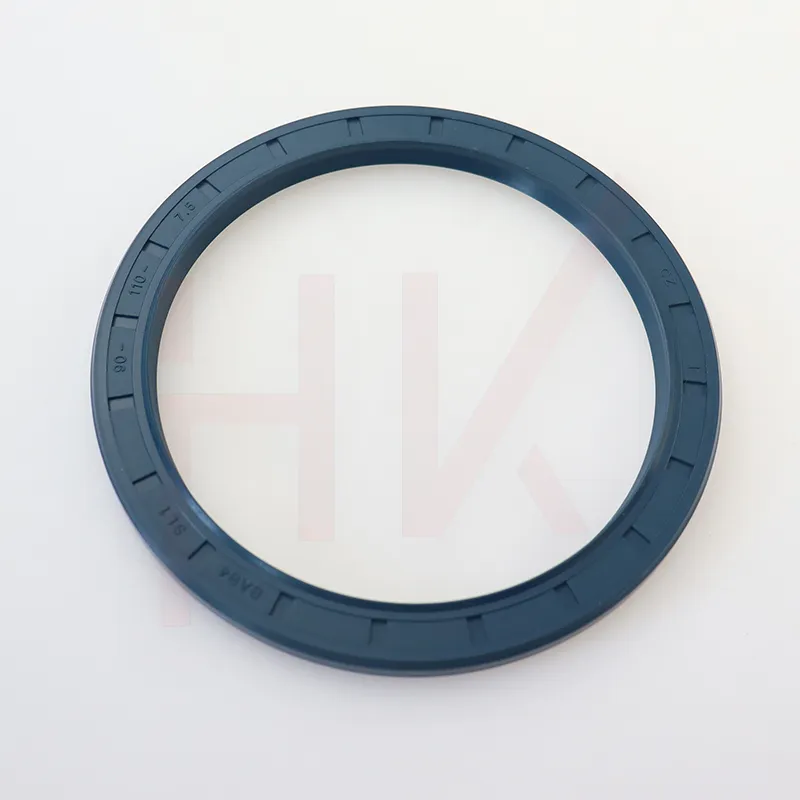Nov . 05, 2024 05:04 Back to list
high temperature shaft seals
Understanding High Temperature Shaft Seals Essential Components for Extreme Conditions
Shaft seals play a vital role in the functionality of rotating machinery, serving as barriers to prevent the leakage of fluids while keeping contaminants out. Among the various types of seals, high-temperature shaft seals are specially designed to withstand elevated temperatures, ensuring the reliability and efficiency of machinery operating in extreme conditions. This article delves into the significance, materials, applications, and design considerations of high-temperature shaft seals.
The Importance of High Temperature Shaft Seals
High-temperature environments can be found in numerous industrial applications, such as those involving engines, turbines, compressors, and various manufacturing processes. In these settings, shaft seals not only prevent the escape of lubricants and other fluids but also protect the internal components from dust, debris, and other contaminants that can compromise performance and lead to costly downtime. High-temperature shaft seals must be able to maintain their integrity, resilience, and sealing capabilities while exposed to high heat, which can otherwise lead to premature wear, failure, and system inefficiency.
Materials Used in High Temperature Shaft Seals
The selection of materials for high-temperature shaft seals is critical, as traditional elastomers and plastics may not withstand elevated temperatures without degrading. Common materials utilized in the production of these seals include
1. Fluoroelastomers These are well-known for their excellent heat resistance, chemical stability, and durability. They can function effectively at temperatures as high as 200°C (392°F).
2. Metallic Seals In some high-temperature applications, metallic seals may be employed. These seals can endure extreme conditions and are often used in contexts where traditional elastomers would fail.
3. PTFE (Polytetrafluoroethylene) This material boasts high-temperature resistance and low friction properties, making it an excellent choice for a variety of sealing applications.
4. Ceramic Composites For the most demanding applications, ceramic materials offer outstanding thermal stability and resistance to wear.
5. Graphite Seals Graphite can withstand very high temperatures and provides a good sealing solution in applications that involve thermal cycling.
Each material has its own set of advantages and considerations, making it important to choose the right one based on the specific application requirements.
Applications of High Temperature Shaft Seals
High-temperature shaft seals find applications in diverse industries, including
high temperature shaft seals

- Aerospace In aircraft engines and auxiliary power units, high-temperature seals maintain performance under extreme conditions due to altitude and engine heat.
- Automotive Turbochargers, fuel pumps, and other engine components utilize high-temperature seals to manage the various thermal stresses encountered.
- Oil and Gas Equipment utilized in extraction and refining processes often operates under intense heat; therefore, reliable sealing solutions are crucial to prevent leaks and maintain environmental safety.
- Power Generation Turbines and generators depend on high-temperature shaft seals to keep operation efficient and within safety standards.
- Manufacturing Machinery involving high-temperature processes, such as metal forging and glass production, often requires robust sealing solutions to protect sensitive components.
Design Considerations
When designing high-temperature shaft seals, several factors must be taken into account
- Temperature Range Understanding the operational temperature range and identifying potential thermal spikes is critical in selecting appropriate materials and designs.
- Pressure Conditions Seals must be engineered to withstand not just high temperatures but also the pressure conditions that are common in many applications.
- Mechanical Movement The extent of shaft movement, including speed and radial load, should be factored into the seal design to ensure long-term performance.
- Chemical Compatibility In many high-temperature environments, seals may be exposed to aggressive chemicals. Material selection should consider chemical resistance to prevent degradation.
- Environmental Factors Factors such as humidity, particulate contamination, and exposure to various gases should be evaluated to enhance seal effectiveness.
Conclusion
High-temperature shaft seals are essential components that play a crucial role in maintaining the performance and longevity of machinery operating in extreme conditions. By choosing the right materials and considering design factors specific to each application's demands, industries can significantly enhance the reliability and efficiency of their systems. As technology advances and operational environments become more demanding, the importance of effective high-temperature sealing solutions will only continue to grow.
-
TCN Oil Seal Metal Ring Reinforcement for Heavy Machinery
NewsJul.25,2025
-
Rotary Lip Seal Spring-Loaded Design for High-Speed Applications
NewsJul.25,2025
-
Hydraulic Cylinder Seals Polyurethane Material for High-Impact Jobs
NewsJul.25,2025
-
High Pressure Oil Seal Polyurethane Coating Wear Resistance
NewsJul.25,2025
-
Dust Proof Seal Double Lip Design for Construction Equipment
NewsJul.25,2025
-
Hub Seal Polyurethane Wear Resistance in Agricultural Vehicles
NewsJul.25,2025
-
The Trans-formative Journey of Wheel Hub Oil Seals
NewsJun.06,2025
Products categories
















